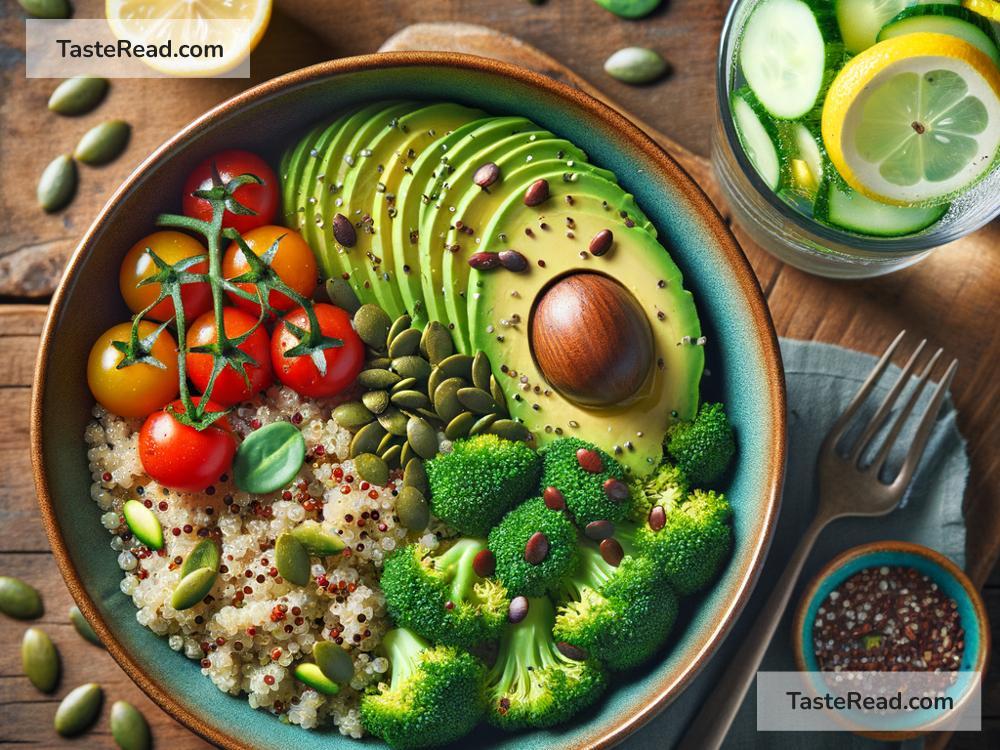Foods That Promote Healthy Blood Sugar Regulation
Maintaining healthy blood sugar levels is important for everyone, whether you’re living with diabetes or simply want to stay energetic and avoid sugar crashes. Blood sugar, or glucose, gives our body the energy it needs to function. However, when blood sugar levels are too high or drop too low, it can lead to health issues like fatigue, mood swings, and long-term complications like heart disease.
The good news is that the food you eat plays an essential role in keeping your blood sugar balanced. In this article, we’ll explore some foods that can help regulate blood sugar levels naturally and support your overall well-being.
Why Does Blood Sugar Regulation Matter?
Before diving into specific foods, let’s discuss why blood sugar regulation is so important. When you eat food, your body breaks it down into glucose. This glucose enters your bloodstream and is transported to your cells with the help of insulin, a hormone made by your pancreas.
If your diet includes too many sugary or processed foods, it can cause spikes in blood sugar, forcing your body to produce more insulin than normal. Over time, this can lead to insulin resistance, where your cells stop responding to insulin effectively, and conditions like prediabetes or type 2 diabetes may develop.
On the other hand, skipping meals or going for too long without eating can cause blood sugar levels to drop too low, leaving you feeling shaky, tired, or irritable. By choosing the right foods, you can help keep your blood sugar within a healthy range.
Foods That Help Regulate Blood Sugar
The key to controlling blood sugar is eating nutrient-rich, whole foods that provide sustained energy without causing dramatic spikes or crashes. Here are some of the best options:
1. Whole Grains
Whole grains like oatmeal, quinoa, and brown rice are excellent for managing blood sugar. Unlike refined grains, they contain fiber, which slows down how quickly glucose is released into your bloodstream. Fiber also keeps you feeling full, which can help you avoid overeating or snacking on sugary foods.
2. Leafy Greens
Spinach, kale, and other leafy greens are nutritional powerhouses that are low in calories and carbohydrates. They’re also high in magnesium, a mineral that plays an important role in blood sugar regulation. Plus, they’re versatile—you can toss them in smoothies, stir-fries, or salads.
3. Beans and Lentils
Legumes like black beans, chickpeas, and lentils are full of fiber and protein, which work together to slow digestion and stabilize blood sugar. These plant-based proteins are also great alternatives to starchy side dishes like mashed potatoes or white rice.
4. Nuts and Seeds
Unsalted nuts like almonds, walnuts, and pistachios, as well as seeds like chia and flaxseeds, are loaded with healthy fats and fiber. They make a great snack that won’t cause blood sugar spikes. Just be mindful of portion sizes, as nuts are calorie-dense.
5. Low-Glycemic Fruits
Not all fruits are created equal when it comes to blood sugar regulation. Fruits with a low glycemic index, like berries, apples, oranges, and pears, release glucose slowly and help maintain steady blood sugar levels. Avoid overripe bananas or dried fruits, which can be more concentrated in sugar.
6. Fatty Fish
Salmon, mackerel, and sardines are rich in omega-3 fatty acids, which can improve insulin sensitivity and reduce inflammation in the body. Pairing fatty fish with a fiber-rich side dish can create a balanced, blood sugar-friendly meal.
7. Greek Yogurt
Unsweetened Greek yogurt is a great source of protein and probiotics, which may support better blood sugar control and gut health. Just skip flavored yogurts that often contain added sugars and stick to plain versions you can customize with fruits or nuts.
8. Sweet Potatoes
If you’re looking for a starchy side dish without the sugar spike of regular potatoes, sweet potatoes are a great alternative. They contain fiber and have a lower glycemic index, helping you avoid blood sugar highs and lows.
9. Cinnamon
This warming spice may not be a food, but research suggests cinnamon can help improve insulin sensitivity and lower fasting blood sugar levels. Sprinkle a little cinnamon on your oatmeal, yogurt, or even your coffee for added health benefits.
10. Avocado
Avocados are loaded with heart-healthy fats, fiber, and very few carbohydrates, making them an excellent choice for steadying blood sugar. They’re also super versatile—use them in salads, on toast, or blended into smoothies.
Tips to Pair Foods Effectively
While these individual foods are great at supporting blood sugar regulation, how you pair them makes a big difference. Combining protein, fiber, and healthy fats in a single meal can slow digestion and prevent rapid blood sugar changes. For example:
– Pair oatmeal with chia seeds and almond butter.
– Have salmon with a side of sweet potato and spinach.
– Snack on Greek yogurt with a handful of berries.
A balanced plate creates long-lasting energy and keeps your blood sugar steady throughout the day.
Conclusion: Small Choices, Big Impact
Regulating blood sugar isn’t about dieting or depriving yourself of delicious food. It’s about making small, smart choices that support your body’s ability to stabilize glucose. Incorporating whole grains, lean proteins, healthy fats, and fiber-rich foods into your daily meals can have a big impact on your health now and in the future.
Remember, consistency is key. There’s nothing wrong with enjoying a sweet treat every once in a while; just make sure your overall diet includes plenty of foods that support healthy blood sugar levels. Your body will thank you with better energy, improved mood, and a lower risk of chronic illnesses.
Let food be your medicine and enjoy the journey to better health!


